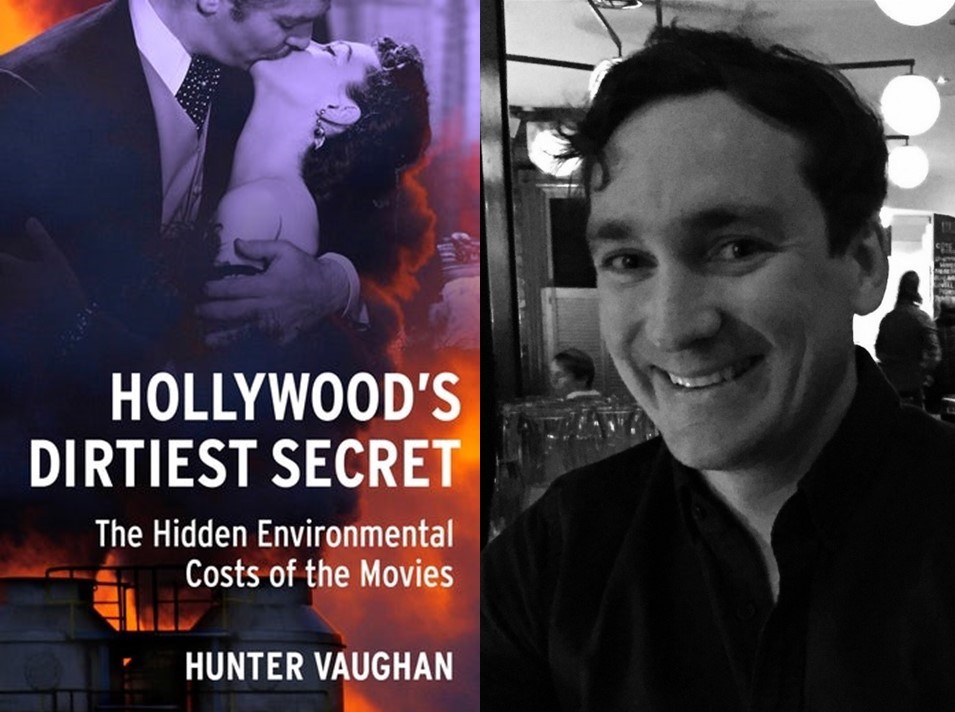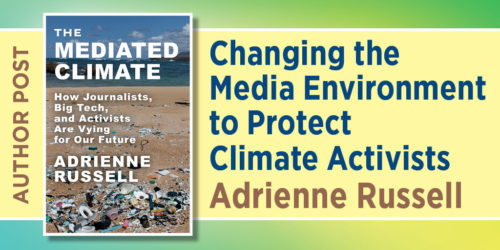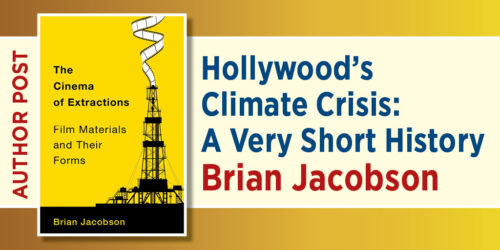Q&A: Hunter Vaughan on Hollywood’s Dirtiest Secret

“In Vaughan’s deft readings of multiple films and their production apparatuses, film theory and analysis also become “updated” into a cutting-edge discipline. Hollywood’s Dirtiest Secret is an essential book in ecocinema and ecomedia studies and an important contribution to ecomaterialism within cultural studies more broadly.”
~ Adrian Ivakhiv, author of Ecologies of the Moving Image: Cinema, Affect, Nature
On Monday, you read Hunter Vaughan’s guest post outlining the environmental impact of Hollywood’s most recognized and star-studded universal films; in today’s Hollywood’s Dirtiest Secret feature, we present a Q&A in which Vaughan explains why he chose to expose Hollywood’s environmental damage and delves into the common misconceptions behind its digital revolution.
• • • • • •
Q: Hundreds of books have been written on Hollywood history, its scandals and secrets, and its iconic films – what could there possibly be left to say?
Hunter Vaughan: As we discovered over the last couple of years, Hollywood’s potential for preserving the status quo is as strong as its capacity for genuine change is weak. The narratives of #MeToo largely remain to be revealed, while the histories of queer and non-white experiences remain largely silenced in the official record. I many cases, these issues involve two major erasures: that of labor, and that of ideological hypocrisy. These two erasures are also largely present in the motion picture industry’s exploitation of—and impact on—the environment, from the more general footprint of its travel, energy, and chemical intensive practices to the disruption and destruction of specific ecosystems, wildlife, and topographies in its quest for spectacle and profit. As we careen towards climate change crises, the digital technology and media industries have crafted a very convincing neoliberal sales pitch that lifestyle apps and life on the cloud are also part of a “green revolution”. Meanwhile, Hollywood has rebranded itself as eco-friendly through a new eco-warrior type of stardom, images of Leonardo Dicaprio in a Prius, and a genre of ecodisaster film that reboots old clichés (white male heroes, techno-fetishism, industrial innovation) according to new social anxieties regarding environmental crisis. The fundamental ways in which Hollywood’s values, and the values it both reflects and shapes in American society, are based on environmental irresponsibility, and the industrial and cultural forms that the Scientific Revolution and rational positivism have taken in the cinematic century through a massive machinery of image production…this is a story that is still unfolding, a story that needs to be told.
Q: But Hollywood has such an environmentalist presence, from carbon-neutral films like The Day After Tomorrow to star-driven documentaries like Before the Flood. When there are so many films and film professionals talking about environmental issues, isn’t it part of the solution rather than the problem?
HV: Yes and no. Considering how much influence movie stars still exert over cultural values, and how integral moving-image culture is to the marketing techniques of any major social movement or change, it would be overly cynical to dismiss the possible positive impact of Hollywood’s mainstream strategies – especially when these are harnessed for actual change (such as Matt Damon’s work with Water.Org or the visibility Shailene Woodley brought via social media to the environmental injustices of Standing Rock). However, as long as such figures, and the films they make, are participating in the basic Hollywood logic of resource use in the name of spectacle, their participation is at the leisure of their own privilege.
Similarly, the major studios have created green initiatives meant to greenwash the true footprint of their industry by going paperless, using LED lighting, or battery-operated cars on set. However, this is not a real commitment: they are still part of the problem, by prioritizing profit over sustainability, power over social justice, and entertainment over ethics. If James Cameron, Leo DiCaprio, Matt Damon, and Angelina Jolie—four celebrities notable for admirable surface messages and, to differing degrees, political engagement—were committed in a way that meant more than words, they would pool their financial and cultural capital and lobby Washington for major climate change policies. These policies would address a commitment to renewable energies and job training, closing tax loopholes for tech and energy corporations, and enforcing pollution and greenhouse gas emissions. Making a film that makes you a ton of money while also having a popularly decent message is not that impressive when it comes down to it, and will not produce change in a system controlled by lobbying money – the Koch brothers and the energy industry will never be phased by an Avatar, no matter how many box office records the series breaks, as long as the people making and profiting from Avatar it still abide by the same neoliberal principles.
Q: Speaking of Avatar, we have been led to believe that the digital revolution is a green one – is it not?
HV: This is one of the great myths of the twenty-first century and the digital revolution. Yes, it is very much a revolution. The ubiquitous spread of digital technology and media rivals any of the great technology developments (such as written script, or the printing press) and social reconfigurations (such as free market capitalism) in its potential to radically change this planet.
But this revolution is not green—and it is not, as has been sold to us, immaterial. Every word on this page, every image on this site, every show we stream, every bit of code that runs our Nest apps and every binged megabyte and every block in the Bitchain and every CGI’d special effect is run on energy, and the planet’s energy grids are still very dirty. The manufacturing of our digital hardware, which in the West at least we are kept from seeing, kept from knowing, kept from understanding, is based entirely on an energy-intensive and footprint heavy network of forced and sweatshop labor, disruptive mining, and shipping of e-waste to exploited villages where women and children work in highly carcinogenic conditions to melt down mainframes in search of re-sellable metals. Unless the “green” refers to money, this revolution is not green, but is a new dynamic of environmental colonialism that extends from resource extraction to waste disposal, riding the tide of our cavalier material entitlement to a new cultural age of speed, memory, and distraction.








